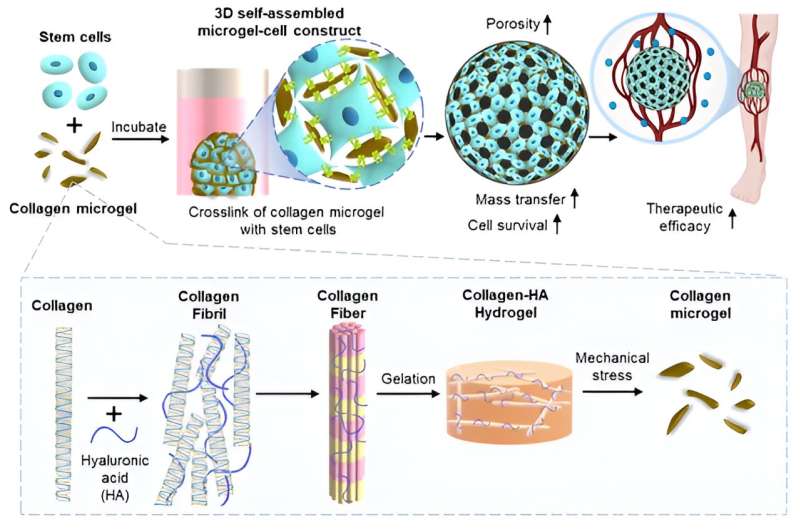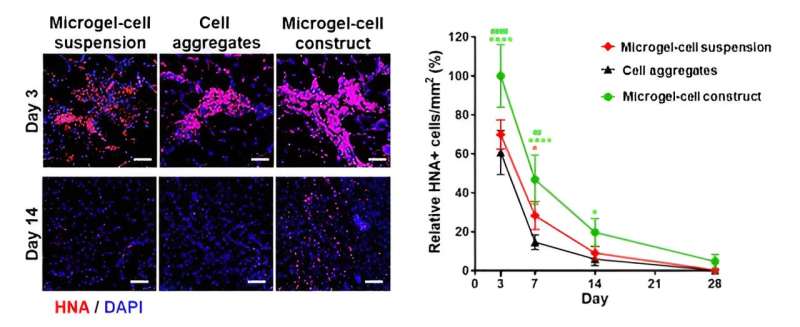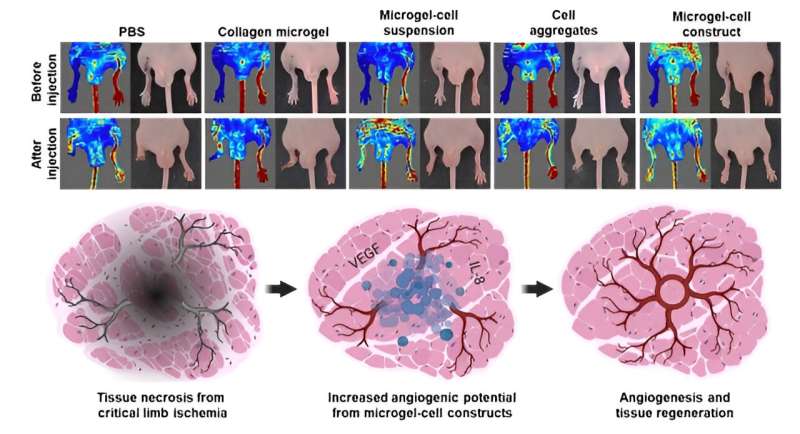This article has been reviewed according to Science X's editorial process and policies. Editors have highlighted the following attributes while ensuring the content's credibility:
fact-checked
trusted source
proofread
Developing a stem cell therapy to prevent amputations from critical limb ischemia

Critical limb ischemia is a condition in which the main blood vessels supplying blood to the legs are blocked, causing blood flow to gradually decrease as atherosclerosis progresses in the peripheral arteries. It is a severe form of peripheral artery disease that causes progressive closure of arteries in the lower extremity, leading to the necrosis of the leg tissue and eventual amputation.
Current treatments include angioplasty procedures such as stent implantation and anti-thrombotic drugs, but there is a risk of blood vessel damage and recurrence of blood clots, which is why there is a strong interest in developing a treatment using stem cells.
A research team led by Dr. Sangheon Kim of the Center for Biomaterials Research at the Korea Institute of Science and Technology (KIST) has developed a three-dimensional stem cell therapy to treat critical limb ischemia through a self-assembling platform technology using a new material microgel. Their paper is published in the journal Bioactive Materials.
By using collagen microgels, a new biocompatible material, the researchers were able to easily transplant stem cells into the body and increase cell survival rate compared to 3D stem cell therapies made of cells alone.

Stem cell therapies have high tissue regeneration capabilities, but when stem cells are transplanted alone, hypoxia at the site of injury, immune responses, and other factors can reduce cell viability and prevent the desired therapeutic effect. Therefore, it is necessary to develop a material that delivers stem cells using biodegradable polymers or components of extracellular matrix as a support to increase cell viability.
The team processed collagen hydrogels to micro-scale to create porous, three-dimensional scaffolds that are easy to inject in the body and have a uniform cell distribution. Collagen, a component of the extracellular matrix, has excellent biocompatibility and cellular activity, which can induce cell self-assembly by promoting interactions between the microgel particles and collagen receptors on stem cells. In addition, the spacing between microgel particles increased the porosity of the three-dimensional constructs, improving delivery efficiency and cell survival.
The microgel-cell constructs developed by the researchers expressed more pro-angiogenic factors and exhibited higher angiogenic potential than cell-only constructs. When microgel-cell constructs were injected into the muscle tissue of mice with critical limb ischemia, blood perfusion rate increased by about 40% and limb salvage ratio increased by 60% compared to the cell-only constructs, confirming their effectiveness in increasing blood flow and preventing necrosis in the ischemic limb.

The new stem cell therapy is expected to provide a new alternative for patients with critical limb ischemia who have limited treatment options other than amputation due to its excellent angiogenic effect. Furthermore, since angiogenesis is an essential component of various tissue regeneration processes, it can be extended to other diseases with similar mechanisms to peripheral arterial disease.
"The collagen microgel developed in this study is a new biomaterial with excellent biocompatibility and high potential for clinical applications," said Dr. Sangheon Kim of KIST.
"We plan to develop technologies for administration methods required in the medical field, as well as conduct follow-up research to clarify the clear mechanism of action of the treatment and discover target factors."
More information: Haeun Chung et al, A micro-fragmented collagen gel as a cell-assembling platform for critical limb ischemia repair, Bioactive Materials (2023). DOI: 10.1016/j.bioactmat.2023.12.008

















